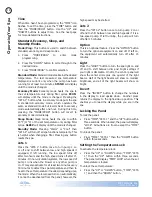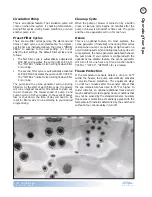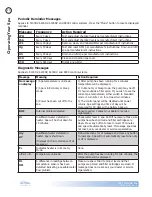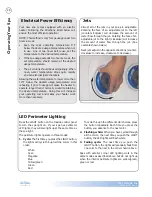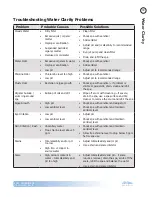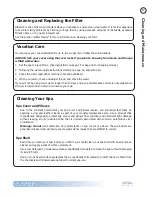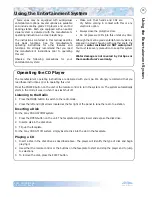
2013 Portable Spa
LTR20131000, Rev. E
W
ater Clarity
www.calspas.com
32
Testing and Adjusting Spa Water
You have two types of testing methods to choose from:
The reagent test kit
•
is a method which provides a high level of accuracy. It is available in either liquid
or tablet form.
Test strips
•
are a convenient testing method commonly used by spa owners.
Balancing the pH
The pH level is the measure of the balance between
acidity and alkalinity.
If the pH is too low, it can cause corrosion of metal
fixtures and the heating element. Low pH can be
corrected by adding a pH decreaser.
If the pH is too high, it can cause scaling by allowing
metals or minerals to form deposits and stain spa
surfaces. High pH can be corrected by adding a pH
increaser
8.2
8.0
7.8
7.6
7.4
7.2
7.0
6.8
6.6
Too alkaline,
causes scaling
Ideal balance
Too acidic,
causes corrosion
Need to lower the pH level
Need to raise the pH level
Balancing the Total Alkalinity
Total alkalinity (TA) is the measure of the total
levels of carbonates, bicarbonates, hydroxides, and
other alkaline substances in the water. TA can be
considered a “pH buffer”. It is the measure of the
ability of the water to resist changes in pH level.
The recommended total alkalinity is 80 - 120
ppm .
If the TA is too low
, the pH level will fluctuate
widely from high to low. Low TA can be corrected
by adding an alkalinity increaser
If the TA is too high, the pH level will tend to be too
high and may be difficult to bring down. High TA
can be corrected by adding an alkalinity decreaser.
When the TA is balanced, it normally remains
stable, although adding water with high or low
alkalinity will raise or lower the TA level.
Balancing the Calcium Hardness
Calcium hardness (CH) is a measure of the total
amount of dissolved calcium in the water. Calcium
helps control the corrosive nature of the spa’s water
and is why soft water is not recommended. The low
calcium content of soft water is very corrosive to
the equipment and can cause staining of the spa
shell.
The recommended calcium hardness is 150
- 200 ppm .
If the CH is too low, add a calcium hardness
increaser.
If the CH is too high, dilute the spa water with soft
water.
When the CH is balanced, it normally remains
stable, although adding soft water or very hard
water will raise or lower the CH level.
Ideal Water Chemistry
Testing For:
Ideal Range (ppm)
Minimum
Maximum
Total Alkalinity
80
120
Calcium Hardness
150
200
pH
7.2
7.6
Summary of Contents for F1418
Page 1: ...LTR20131000 Rev E 9 18 13...

